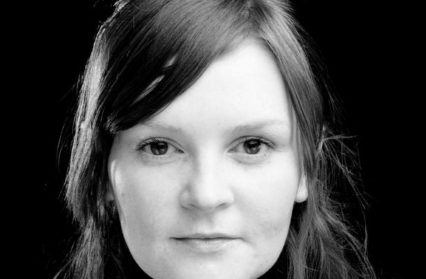For October our WAR Book Club members have been reading The Jeweller by Caryl Lewis (Honno). The Jeweller is a dark and thoughtful tale of memory, truth, death, and connection. It tells the story of Mari, a struggling market stall holder, who uncovers a secret from her past that forces her to re-evaluate her life. The Jeweller was voted for by Book Club members, beating Robert Minhinnick’s new book Nia to be crowned October’s Book of the Month.
‘Often the phrase “it took my breath away” is an overstatement, but not in this case.’
Translating Women
In this interview, we are not only joined by Caryl Lewis but also Gwen Davies, who translated The Jeweller from Welsh to English. Some questions have been submitted by Book Club members.
Mari is the central character in The Jeweller, a strangely introverted, thoughtful figure who seems to simultaneously shy away from people and crave connection. She’s a fascinating character, but so too is her companion – a monkey. What made you choose such an unusual creature as a pet, one with such a volatile and unpredictable temperament?
Caryl: My mother took me to some very strange places when I was a child (thank goodness!) I remember an old woman (or so she seemed to me then) who lived in a small cottage with a monkey. I was entranced by how the monkey seemed to reflect the woman’s mood. How it was so child-like and sometimes sinister. I love to make my work really hard for myself by writing characters who live alone and don’t talk to anyone. Using the monkey allowed me to bring Mari out of herself a bit. It’s a symbol of Mari’s inner child. The pained, hurt presence that Mari must somehow reconcile herself with before she can move on.
The view we get of Mari is of someone struggling to make ends meet – she holds a market stall, its income seemingly sporadic, and she accompanies friends to pick apart the houses of the recently deceased. It comes as both sad and predictable news when we learn Mari is losing her market stall, with the area having been earmarked for more profitable developments. Is this conflict between tradition and development something you see – and perhaps lament – often in your daily life?
Caryl: I live on a farm in West Wales. The tension between tradition and change is central to my work in general. I find so much inspiration in old ways of life slipping away. There’s a great sadness and a great beauty in it. I love superstitions and I was also bought up as a Church goer. I have always felt drawn to people facing new and uncertain futures and people who are pushed to the margins.
One of Mari’s obsessions is collecting the family photos, letters and cards of the deceased, which she treasures and treats as companions. In a similar way, the text often imbues the landscape itself with human qualities – ‘the sea was breathing in the distance’. Is this parallel intentional or accidental?
Caryl: In the same way that the monkey helps us explore Mari’s emotional life, so does nature. I’ve always used it to explore emotion and mood. It helps create a cyclical sense to the work but also underlines the fact that we are part of nature and not apart from it. I’ve always been fascinated by the fact that there are patterns in nature that are reflected in our own bodies. Spirals can be found in shells and in the milky way and on the tips of our fingers.
Memory and the past is haunting in The Jeweller – something treasured yet consuming; elusive yet ever present. Is this a familiar theme for you?
Caryl: Nothing is ever forgotten. That’s what I believe. In the same way energy moves, memories go somewhere else. Creating memories is what we’re here for. We gather them around us like nests. We are the only animals which live amongst our dead. There’s a great solace in memory and if we gather well, our memories can provide us with great comfort.
The Jeweller (Y Gemydd) was first published in Welsh, in 2007. Now, with the publication of the English translation, do you feel the book is having a kind of rebirth?
Caryl: Yes, it does feel like new life has been breathed into the story. It was published a long time ago. I took the raw material and cut the first story and now Gwen has re-cut the stone as it were for a new audience. She has found a new language for the book, she has highlighted certain aspects of it. It’s the same story of course but it feels subtly different- as it should.
Gwen, you have a unique perspective of The Jeweller, having read it and then reshaped it – like, as Caryl hints, Mari’s reshaping of that alluring, infuriating emerald. What would you say sets your translation apart from the original?
Gwen: Technical decisions which I made for one book (in this case, Caryl’s earlier, bestselling novel, appearing in translation as Martha, Jack and Shanco) can become part of your voice in a second book. I only realised this after our British Library launch on 21 October, as I had struggled at earlier events to precisely answer a question about how dialect differs in Welsh (it tends to reflect place rather than class). My response to the challenge of translating the narrative-level dialect in Martha had been to make the authorial voice more intimate (which dialect naturally conveys but which I didn’t want to introduce into the main voice because of that class-place tangle). These were instinctive decisions rather than theoretical ones. What I started to do in Martha was to get right into scenes with its female protagonist, and I developed that to an even greater with Mari – who shares Martha’s observer’s status – in The Jeweller. In this new book, this comes down to cutting down the degree to which Mari is looking on at a scene, and describing it head on instead. I felt that it was already perfectly clear how much Mari is an outsider: she lives alone, she talks mainly to her pet monkey at home, she has no children and has never had a long-term relationship. So the risk paid off, I think.
Other adaptations include a new chapter break towards the end to mark Mari’s departure from a narrative that her voice has dominated. And some riffing on the symbolism around Caryl’s natural images of rounded baby-like cheeks (nuts, roses) to pick up that maternal theme again. Specifically, in this instance, my English alone played on the visually-rounded letter ‘o’ in a line such as ‘rosy cheeks of nobodies’. Julian Barnes, writing in the London Review of Books, is interesting on the idea of managing loss in translation, something which is a negative pull towards the creativity of my approach.
What was the most challenging aspect of your translation work for The Jeweller, and why?
Gwen: Caryl’s alliterative, lyrical prose, with its half-rhymes and echoes influenced by ancient strict-metre poetry. Because I knew that it would be a fool’s task to try and replicate the position on a double-page spread of all those stylistic high-points, I decided to free up possibilities by being more creative, creating the same number of highs across the score but in different positions. One example comes at the end of Chapter 28, where the language needed to be impactful. Here I eschewed a literal translation of Caryl’s line (‘quiet as the grave’) and let inspiration come from the drama of the broader scene, a bay where silence, painful cries and a noisy sea-swell reverberate (‘the beach boomed back in longing’). The cries are presented as being akin to birth pangs: it is the drama presented on the cover, of a monkey wrapped in a christening gown, held close to a dangerous body of water. It is a scene of maternity, a major theme in the novel. I chose to close the soundtrack of this section with silence, as does Caryl, but my line is more unusual than ‘quiet as the grave’ and riffs on the earlier chords: ‘the echo was keeping mum’.
Twelve years seems a long time to wait for translation when we consider the bilingual nature of Wales. Was there a reason it took so long, or is this the natural order? If it is, do you hope this will change?
Caryl: We have so much to feel lucky about here in Wales, but it is frustrating that translation is hit and miss. There doesn’t seem to be a plan. One book may be translated and then years can go by (as in this case) before another sees the light of day, and often this only happens because of the enthusiasm of individual translators. It is to do with funding and grants. Translators need to be respected and paid fairly for their demanding and complex work. If this happened, we’d all benefit.
Gwen: You would expect there to be a strong interest in Wales, among non-Welsh speakers, in extending an appreciation of their sister culture through reading translations: that would stimulate the market, in Wales, at least. But sadly, sometimes it feels as though readers of Welsh are doing the spade-work. It feels as though they show more interest in Welsh writing in English than their monoglot friends do in exploring Welsh-language books, either by reading about them in English-language reviews, or through supporting translations. Here though is a wonderful place to begin, and I don’t mean to sound jaded as our publishers, Honno, have been brilliant. And surely, with that English-reading market on our doorstep, the potential is there to allow Welsh-English translations to flourish, in Britain, and then hopefully in North America as well, and through such exposure, into other languages. A massive increase to the commissioning-grants element of the Wales Literature Exchange would be a starting point.
Translation is something all bilingual people throughout the world do every time they think in company, or open their mouths. Wales is a bilingual nation: let’s make that fabulous cultural skill (with all its side-benefits in enhancing empathy) visible. Let’s celebrate it through supporting the publication of translated Welsh-language fiction.
And finally, can you both tell us about any projects you’re working on, and any events that might be coming up soon?
Caryl: I am partaking in literary festivals in Singapore next week and on my return the second series of Craith / Hidden will air on S4C on 17th of November. I’m currently working on an English-language children’s book and an English-language novel as well as developing various projects for screen.
Gwen: I’m starting to translate Mihangel Morgan’s Pan Oeddwn Fachgen (Y Lolfa).
Diolch Caryl, and thanks Gwen, for shedding so much light on the process of writing and translating The Jeweller. We look forward to many more books from you – in both Welsh and English.
If discovering great new literature from Wales is your thing and you’d like to be a part of the Wales Arts Review Book Club, please join by liking the Facebook page. It’s a friendly community of readers, where you will find book discounts, conversation and literary insight. We hope to see you there.












